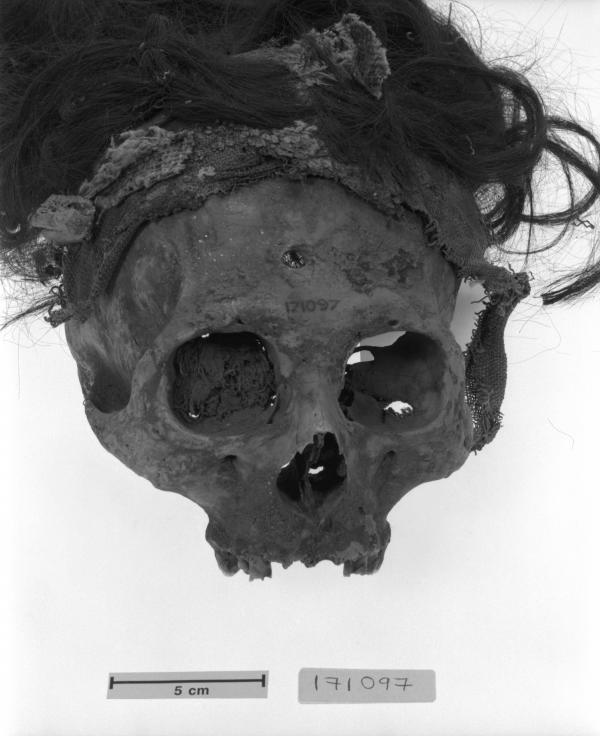
We've all heard about shrunken heads - a ritual practice in which people from Melanesia and the Amazon basin preserved the heads of their enemies by removing the skull, then boiling down the skin and flesh (I love the collection at London's Horniman Museum). It's thought these objects had religious significance - that shrinking the head of anyone you killed in battle stopped their soul from coming back to seek revenge.
The trophy heads of Peru's Nasca people, however, are rather more mysterious. The Nascas lived in an area called the Nazca Drainage in southern Peru, one of the driest places on Earth, in the first to eighth centuries AD. They had sophisticated ceramics, textiles and a complex system of underground aqueducts, but they're best known for carving out the Nazca lines - giant geometrical shapes and animal figures - on the desert floor. It's still not clear what these were for - perhaps for the Gods to look at, perhaps to mark out astronomical alignments relevant to the agricultural calendar, perhaps to mark the routes of cermonial processions. We can probably rule out Erich von Daniken's theory that they were landing strips for alien spaceships...
The Nascas also did an impressive line in preserved heads. This time the skull was the main feature, with a hole drilled in the front so that it could be hung or carried on a cord. Scholars have been arguing for a while over what they were for. These may have had something to do with religious beliefs surrounding agriculture and fertility (which must have been of prime concern in such a dry location) because on some pottery vessels the heads are shown with plants growing out of the top. Other experts have emphasised their role in violence and warfare. One key question was whether the skulls came from enemy warriors from other populations, or from the Nascas' own dead.
Now a team of archaeologists including Kelly Knudson of Arizona State University has measured the levels of different strontium, oxygen and carbon isotopes in the tooth enamel of Nasca trophy heads from throughout the area, and compared them to those from ordinary burials. These isotopes provide information about the diet and geographical origins of the person concerned. I wrote about a similar technique last year, used to show that most of the crew of the doomed Mary Rose came not from England but from southern Europe, suggesting that language problems might have contributed to the ship's demise.
In the trophy heads study, Knudson and her colleagues showed that isotope levels in the trophies are very similar to those from the local population, indicating that the heads came from venerated ancestors, not scorned enemies. (This got mentioned by a few blogs in January, but the paper is in the current issue of Journal of Anthropological Archaeology, so I figured that was another excuse to write about it now.)
This result doesn't mean the heads were taken peacefully, however. Some scholars believe that the Nascas engaged in ritual warfare, undertaken purely to take heads to make into trophies. The very idea sends a chill down my spine, though in such a different culture perhaps being immortalised in this way would have been seen as an honour.
It does always amaze me how differently (and how easily) past societies seem to have viewed death. When the Greek philosopher Posidonius visited the Celtic lands of Gaul in the first century BC, he came back with tales of a violent people who would hang the severed heads of their enemies in doorways. Rowdy feasts would regularly end up in fights to the death, and sometimes, after a few glasses of wine, a man would lie face up on his shield to have his throat cut for the general amusement of the party.